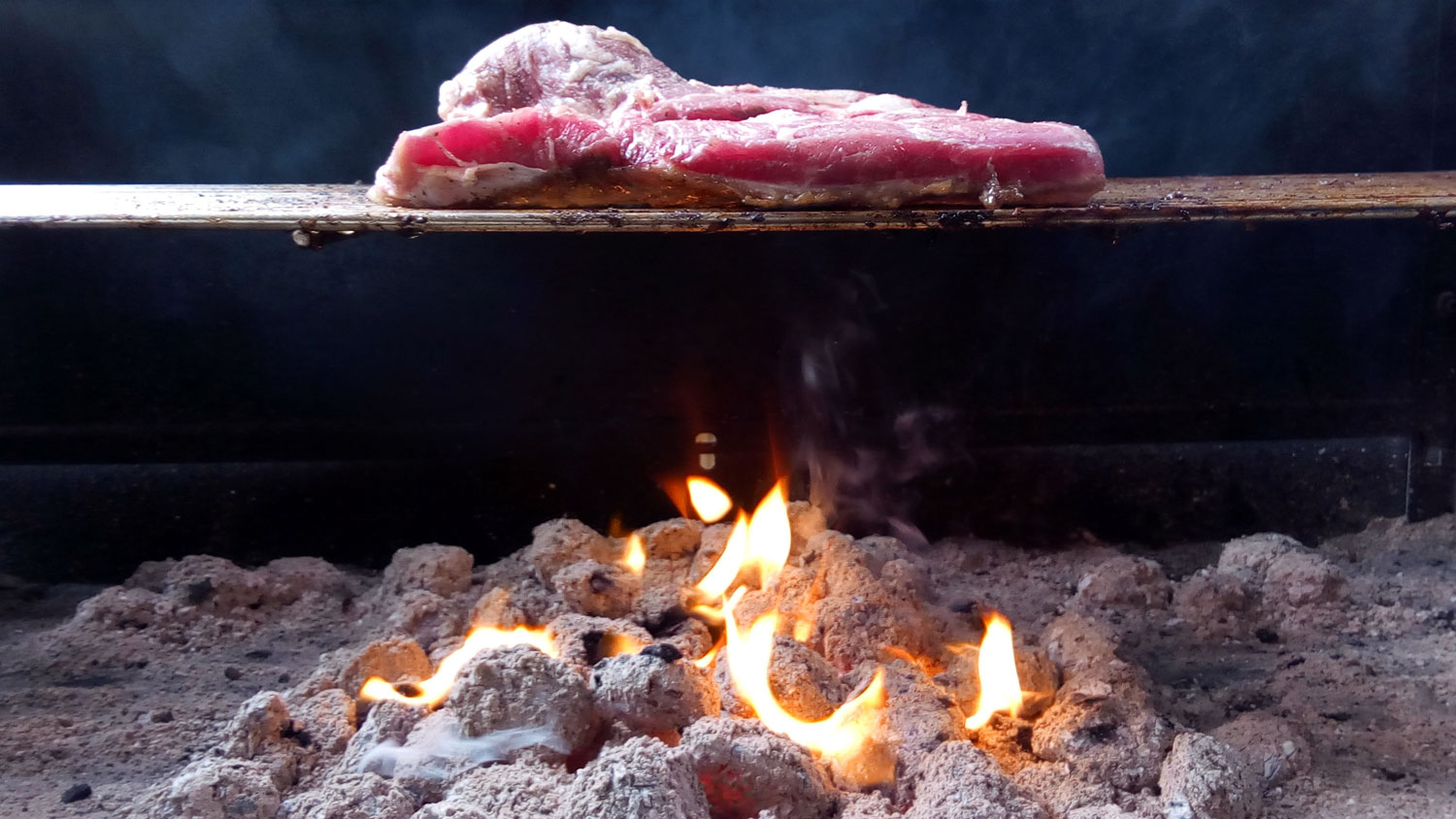Meet Pollinators That Flap, Creep or Scurry
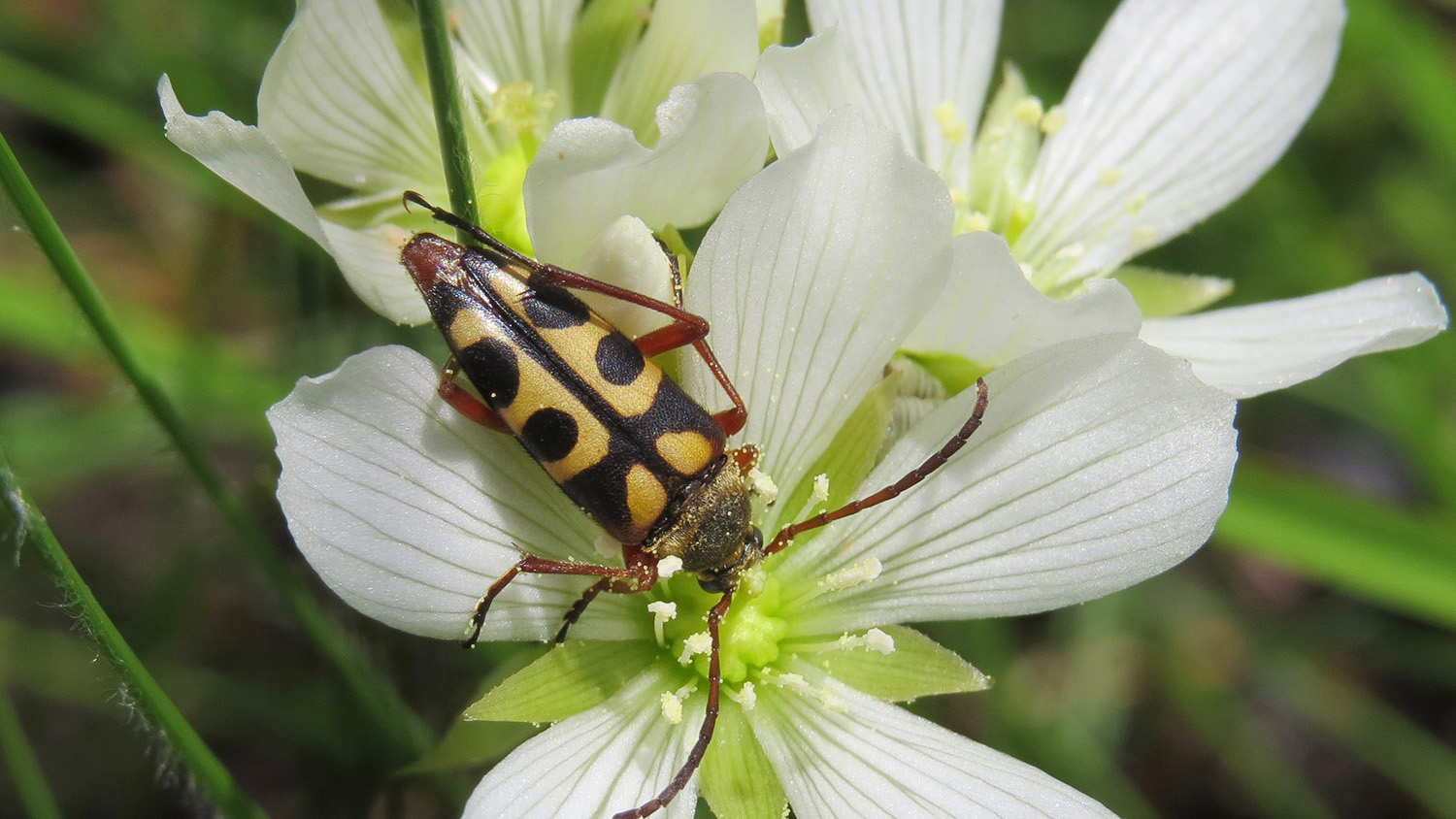
When Wolfgang the corpse flower bloomed recently in Raleigh, he raised a stink for a reason: to attract flies and carrion beetles that could help him reproduce.
Though they’re less dramatic than Wolfgang, over 80% of the world’s flowering plants need help with pollination – moving pollen from the male to female parts of plants. Fertilized flowers produce the seeds and fruit to feed us and sustain the ecosystem.
Bees, both native and domesticated, are the most prominent pollinators. Other helpful animals flap, creep or scurry instead of buzzing by.
North Carolina State University entomologist Clyde Sorenson, an expert on insects of agricultural significance in North Carolina and the Southeast, highlights some prominent pollinators in our region and a few unusual ones around the world.
“Lots of weird things happen out there,” he says.
Venus Flytrap: Native Bees, Bright Beetles
North Carolina’s primary pollinators include well-known animals like bees, butterflies, beetles and birds, Sorenson says. Some of the plant-pollinator relationships are intriguing.
While studying the Venus flytrap, native to an area within a 100-mile radius of Wilmington, Sorenson and his collaborators found that it has both flying and creeping pollinators.
“Native bees like green sweat bees are important pollinators of Venus flytrap, but some beetles also appear to transport pollen from one flower to the next,” he says. “That was kind of an interesting revelation for us.
“The checkered and flower longhorn beetles that are implicated tend to be hairy, so they trap pollen on their body surfaces.” The plant appears to spare the brightly colored beetles and other insects that serve as pollinators, NC State researchers have found.
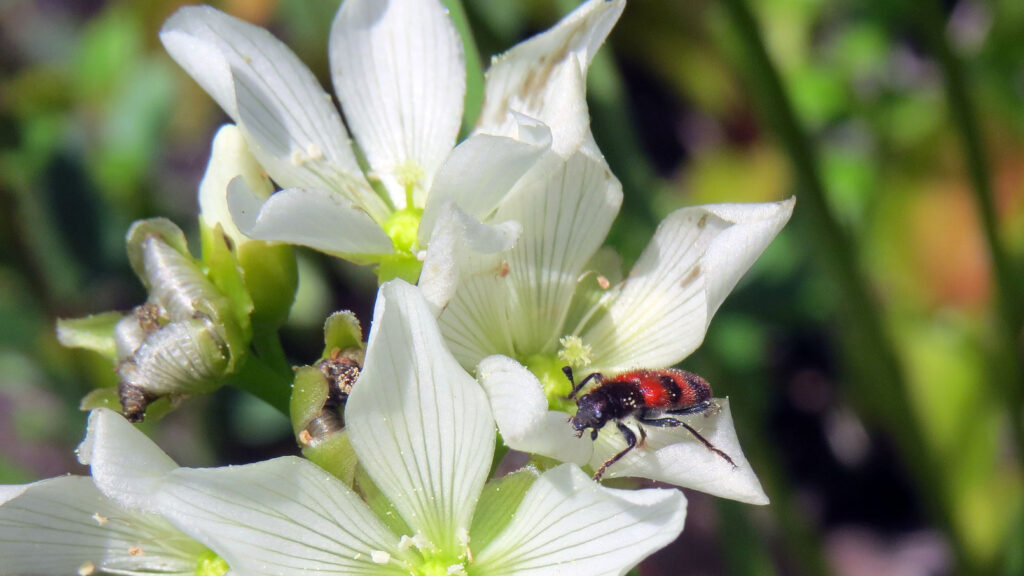
Pollinator species near the carnivorous plant mostly fly from flower to flower, which keeps them away from the Venus flytrap’s danger zone, Sorenson says.
“It should probably be called the Carolina Spider Trap, more appropriately, because the plants eat a lot of ants and spiders, but not that many flies.”
Flame Azaleas: Swallowtail Butterflies
On the opposite side of the state, a different flying insect plays a role in pollination.
“If you go up to the mountains in early summer, the flame azalea is one of our more spectacular native flowering shrubs,” Sorenson says. “And it’s pollinated by swallowtail and other large butterflies.”
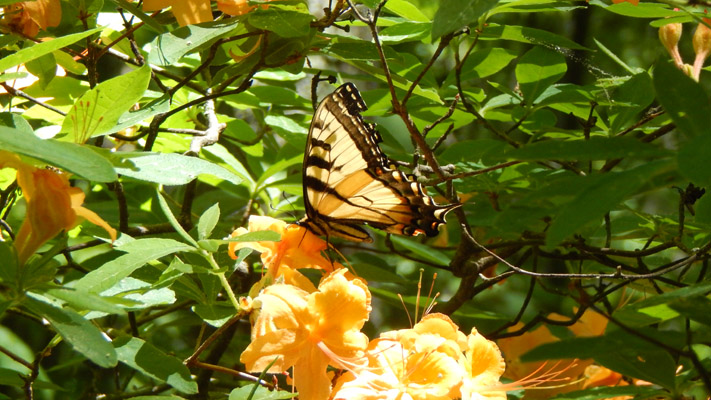
Butterflies tend to keep their distance from the pollen-bearing stamens on plants, Sorenson says. A swallowtail can sip nectar with its long proboscis, which functions like a straw.
“Butterflies, as it turns out, aren’t necessarily great pollinators,” he adds. “Their bodies often are not particularly hairy to pick up pollen.” Flame azaleas just have sweeping stamens that come into contact with the wings of swallowtails, according to a 2015 study by former NC State postdoctoral researcher Mary Jane Epps and colleagues.
Tobacco and Jimsonweed: Moths
A number of flowering plants get an assist from moths, which work the night shift.
“In particular, white flowers that are fragrant at night are probably pollinated by moths,” Sorenson says. “And if you see white tubular flowers, like those on jimsonweed or even tobacco, they may be trying more to attract hawk moths than daytime pollinators.”
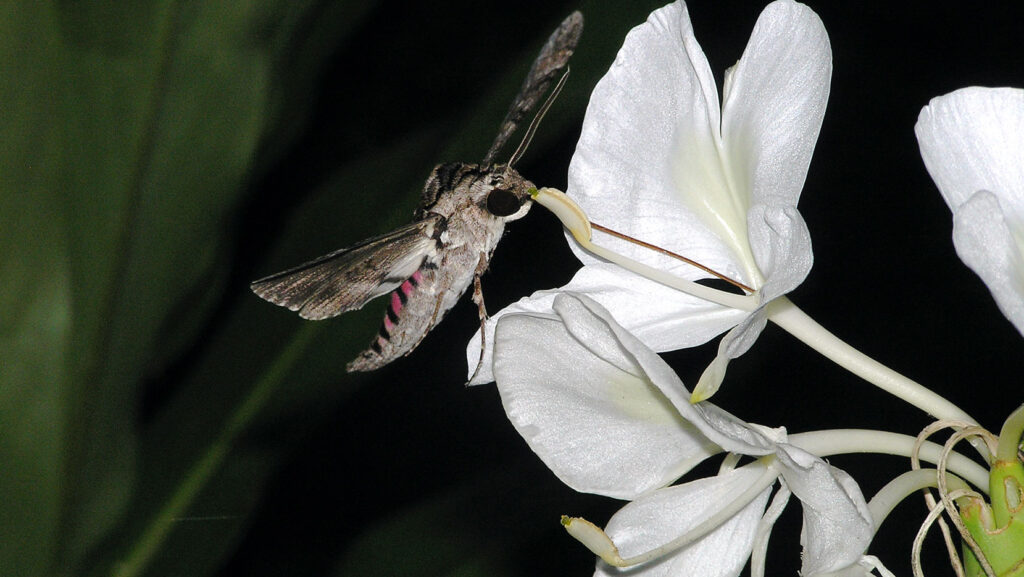
Moths get short shrift when it comes to pollination. “Everybody’s into the butterflies, but butterflies are really just colorful daytime-flying moths with weird antennae,” Sorenson says.
Trumpet and Creeper Vines: Hummingbirds
When hummingbirds hover, it’s usually just long enough for a sip of nectar. But as they reach for that reward, their foreheads often get dusted with pollen, which spreads as they zip from flower to flower, Sorenson says.
“If you see a red tubular flower, it’s probably beckoning hummingbirds. Trumpet creeper vine, scarlet bee balm and plants like that kind of rely on hummingbird pollination.” Hummingbird pollination is more important in the Southwest than in North Carolina, he adds.
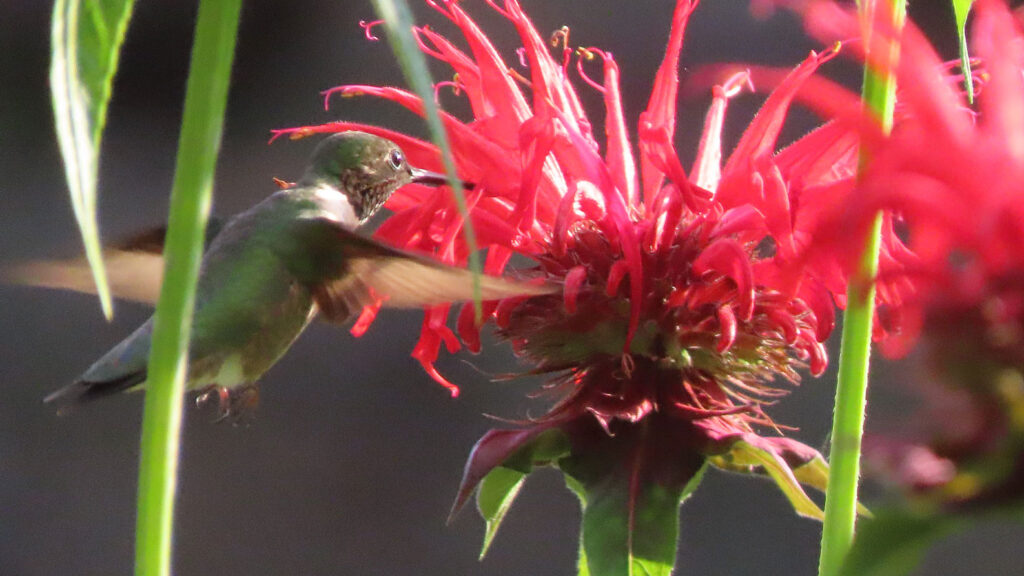
Pollinators Around the World
Here are a few strange pollinators from other regions that Sorenson mentioned.
- Bats are important desert pollinators. Arizona’s iconic saguaro cactus is bat-pollinated, along with many other plants in the Southwest. Animals such as birds and bees visit saguaro flowers as well.
- Tiny chocolate midges, the sole pollinators of the cacao tree, are essential for chocolate production.
- Fig wasps pollinate some of the numerous species of fig trees, laying their eggs inside the plant’s ovaries. It’s part of a mutualistic relationship that enables both the insect and plant to survive.
- Rodents like mice are important pollinators of flowering plants in the genus Protea in South Africa, along with plants in other parts of the world.
- Categories:

